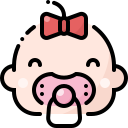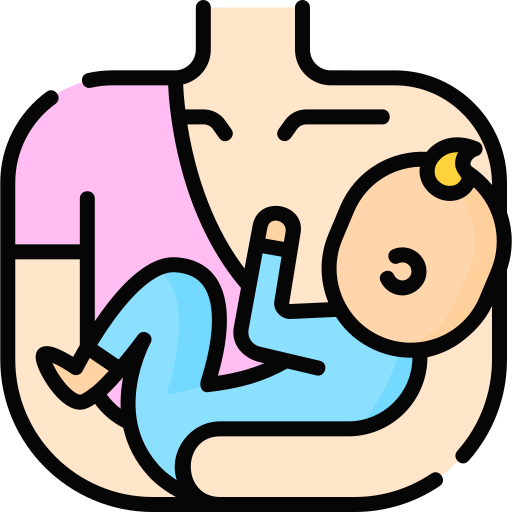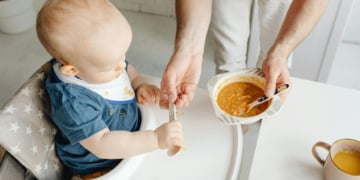Breastfeeding is a beautiful and natural experience, but there comes a time when a mother may need to wean her baby off breast milk.
The process can be challenging for both the mother and the baby, and one of the key concerns is how to stop breastfeeding without causing discomfort. Many mothers wonder, “What can I put on my nipples to stop breastfeeding?”
In this article, we explore safe and effective methods to help you transition smoothly.
Why Do Mothers Want to Stop Breastfeeding?
There are several reasons why a mother may decide to stop breastfeeding, including:
Returning to Work – Many working mothers find it challenging to continue breastfeeding after resuming their jobs.
Medical Reasons – Some mothers need to stop due to health conditions or medications that are unsafe for the baby.
Baby’s Growth – As the baby grows, transitioning to solid foods and other milk sources becomes necessary.
Physical Discomfort – Issues like sore nipples, mastitis, or engorgement can make breastfeeding painful.
Personal Choice – Every mother has the right to decide when it’s the right time to stop.
Things You Can Apply to Your Nipples to Discourage Breastfeeding
If you are looking for ways to discourage your baby from nursing, here are some safe and effective substances you can apply to your nipples:
1. Aloe Vera Gel
Aloe vera has a bitter taste that babies dislike, making them less likely to nurse.
It also has soothing properties that help heal cracked or sore nipples.
Ensure you wash it off before feeding if you change your mind about weaning.
2. Neem Oil
Neem oil has a strong, bitter taste that deters babies from latching on.
It is also known for its anti-inflammatory and healing properties.
However, it is quite potent, so use only a small amount.
3. Lemon Juice
Lemon juice has a sour taste that babies find unappealing.
It is a natural and safe method that doesn’t pose any health risks.
Apply a small amount to the nipple before feeding times.
4. Bitter Gourd Juice
Bitter gourd (karela) juice is known for its intensely bitter taste.
Many mothers in different cultures use this method to wean their babies.
Use it sparingly to avoid irritation.
5. Coffee or Tea Powder
The strong taste of coffee or tea powder can be off-putting for babies.
Dab a small amount on the nipple to discourage breastfeeding.
6. Garlic Paste
Garlic has a strong, pungent odor and taste that babies dislike.
It is a natural and safe method to discourage feeding.
7. Vinegar
Vinegar has a strong sour taste that makes breastfeeding unpleasant for babies.
Apply a small amount, but be cautious as it may cause mild irritation.
8. Mustard Paste
Mustard has a sharp and spicy flavor that babies do not like.
Ensure it is mild and safe before application.
Other Methods to Stop Breastfeeding
Besides applying substances to your nipples, here are other methods to help in weaning:
Gradual Weaning
Reduce the frequency of breastfeeding sessions gradually.
Offer solid foods or formula as a replacement.
This helps prevent engorgement and makes the transition easier for the baby.
Introduce a Bottle or Cup
Replace breastfeeding with bottle-feeding or cup-feeding.
Babies take time to adjust, so be patient and consistent.
Offer Distractions
Engage your baby with playtime, music, or toys during breastfeeding times.
Offer snacks and other comforting activities.
Reduce Milk Supply Naturally
Drink sage tea, as it helps in reducing milk production.
Apply cold cabbage leaves to the breasts to relieve engorgement.
Reduce fluid intake slightly, but stay hydrated.
Seek Support from Family and Friends
Having support during the weaning process can be beneficial.
Ask your partner or family members to help comfort the baby during feeding times.
Emotional support can make the transition easier for both you and your baby.
Modify Feeding Routines
Try feeding in a different location or position to break the habit.
Slowly introduce solid foods or formula in place of breastfeeding sessions.
Things to Avoid While Weaning
Sudden Weaning – Stopping abruptly can lead to engorgement, pain, and emotional distress for both mother and baby.
Using Unsafe Substances – Avoid chemicals or substances that can harm the baby.
Ignoring Emotional Needs – Weaning is an emotional transition, so offer extra cuddles and comfort.
Forgetting to Monitor Your Health – Pay attention to any signs of mastitis, clogged ducts, or extreme discomfort. Seek medical advice if needed.
Potential Challenges and How to Overcome Them
1. Engorgement and Discomfort
Use a cold compress or cabbage leaves to soothe the pain.
Express small amounts of milk to relieve pressure without stimulating more production.
2. Baby’s Resistance to Weaning
Be patient and persistent.
Try substituting breastfeeding with a comfort item like a favorite toy or blanket.
Offer extra cuddles and affection to reassure your baby.
3. Emotional Changes
Hormonal changes during weaning may lead to mood swings or feelings of sadness.
Engage in self-care activities and talk to supportive friends or a counselor if needed.
Final Thoughts
Weaning is a gradual process that requires patience and care. Applying safe and natural substances to your nipples can help discourage breastfeeding while ensuring your baby’s well-being.
However, always observe how your baby reacts and choose methods that work best for both of you.
If you experience severe discomfort or issues, consult a healthcare professional for guidance.
By following these tips, you can make the transition smoother and more comfortable for both you and your baby.
Remember, every child is different, so tailor your weaning approach to what feels right for your unique situation.




























